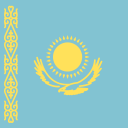*CAVES OF SACRED SPACE
DOI:
https://doi.org/10.55808/1999-4214.2024-3.16Keywords:
sanctuary, hierotopia, hierophany, cave, aruak.Abstract
In the article, among the mysterious places, there is a special place that the cave occupies. This place, which has its origin in chaos, has a sacred meaning in the human mind. In the ancient times of human life, in addition to being a shelter, the cave also served as a sanctuary for communication with mystical forces. The first examples of culture arose in the caves, and the first examples of painting and architecture were also formed in this place. It was assumed that caves in the form of a small particle of chaos are also associated with the ancestral spirit. As a symbol of the chaos at the origin of life, preserved in later eras, the cave appears in the poetic consciousness as a place of good and evil, virtue and evil, as well as protection, with a binary oppositional posture. In the article, the relationship of caves with the concept of holiness, the description of them in ancient written heritage and works of folklore were taken as the subject of analysis in connection with the above-mentioned activities. The place of the cave in ancient consciousness in ancient culture, its character in mythical narratives, as well as its meaning in various religious knowledge are considered, the artistic and cognitive activity of the caves in the “Book of Korkyt Ata”, Homer's epic Odyssey and Magzhan Zhumabayuly's poem “Okzhetpes kiyada” is analyzed. Conclusions are drawn about the models of caves as sanctuaries, which went from ancient knowledge to artistic knowledge.


 Қазақ тілі
Қазақ тілі
 Русский
Русский
 English
English








